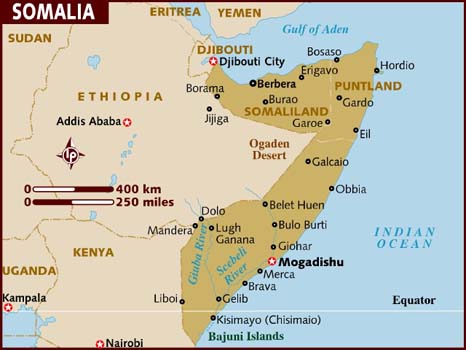By Mark Tran
The UN on Monday declared another region in Somalia to be in famine.
Southern Somalia’s Bay region is the latest region to be declared a famine zone, bringing to six the areas affected. Around 4 million Somalis – more than half of the population – are now in crisis in the drought-stricken country. The UN says 750,000 people are now at risk of death in the next four months if there is no adequate response, an increase from the July figure of 350,000.
Estimates of deaths in the region so far run into the tens of thousands, with the crisis affecting Somalia, Kenya, Ethiopia and Djibouti. More than 150,000 refugees have sought aid in the last few months.
Somalia has been hit hardest, its problems compounded by civil war and the fact it has not had a functioning government since 1991.
Al-Shabaab Islamist insurgents deny that there is famine in areas under their control and have blocked major western aid agencies from providing urgent food supplies. Apart from a few charities, such as Islamic Relief and the Red Cross, most western agencies are banned by al-Shabaab, making it difficult for the UN’s World Food Programme, to reach the most distressed areas. Most of the aid being distributed is going to Somalis who have managed to make it to the capital, Mogadishu, or to refugee camps in Kenya and Ethiopia.
Famine was first declared for three regions in Somalia two months ago amid the worst drought in some regions of east Africa for 60 years.
“The latest round of surveys shows a continuing deterioration in Somalia,” said Mark Bowden, the UN humanitarian co-ordinator for Somalia. “More people are in need of assistance and in some areas there has been a deepening of the crisis. We also know that people will have major needs for assistance well past the end of this year.”
Bowden said Somalis faced massive food deficits after the country suffered its worst harvest in 17 years. With short rains about to start, he said the UN should capitalise on them to alleviate the current food crisis by the end of the year. But the rains also bring increased risks of disease.
“Cholera, malaria and measles could dramatically increase death rates in an already weakened population,” he said. “Additional support will be required to ensure that we control these risks.”
Grainne Moloney, chief technical officer for the Food Security and Nutrition Analysis Unit, warned that the world should not let its guard down with Somalia which is at the epicentre of the famine.
“We must focus our attention to ensure that we assist those who are there, reduce excess mortality and do our utmost to stabilise and improve access to food,” she said. “The increase in humanitarian fundsthat have come in since July has allowed us to immediately and significantly scale up our response, but this external support will need to be sustained. These funds have only just begun to flow in now, and we can expect our activities to continue to scale-up.”
More than 1 million people throughout Somalia received general food assistance in August compared with 750,000 in July.
The worsening famine takes place against renewed diplomatic efforts to restore stability to what many consider the ultimate failed state, riven by conflict for two decades. A meeting in Mogadishu bringing together Somali leaders in the capital is expected to endorse a “road map” outlining the most important tasks for the government, parliament and regional authorities to achieve in the next 12 months.
Augustine Mahiga, the UN special representative, who is brokering the three-day meeting that began on Sunda, said with al-Shabaab in retreat and the country the focus of international attention, this was a “chance for the people of Somalia to rise above parochial interests and demonstrate their commitment to progress”.
The meeting brings together representatives of the weak transitional federal government, which is being propped up by 6,000 African Union peacekeepers, the transitional parliament, the self-declared semi-autonomous regions of Puntland and Galmudug, as well as the group known as Ahlu Sunna Wal Jama’a









